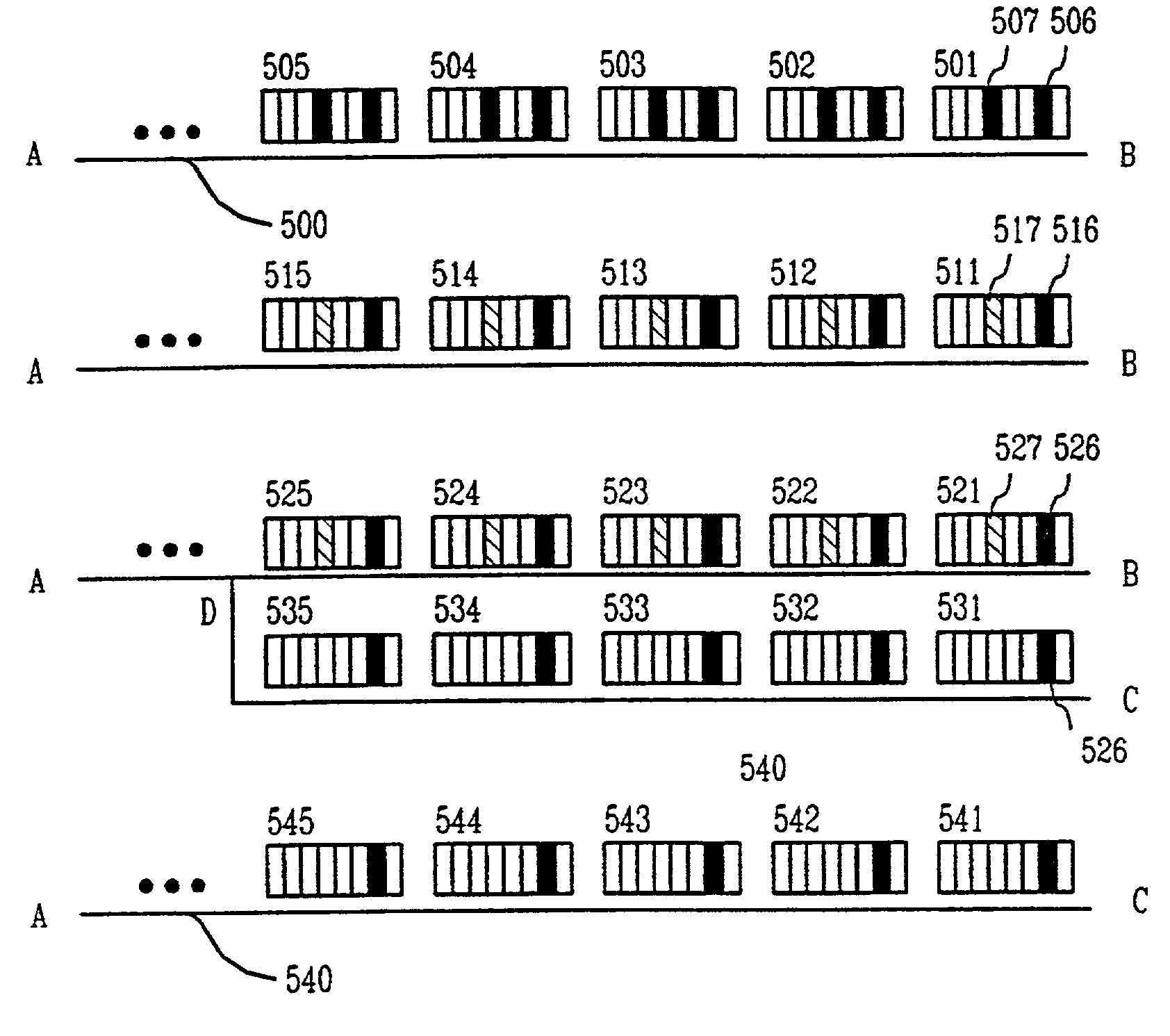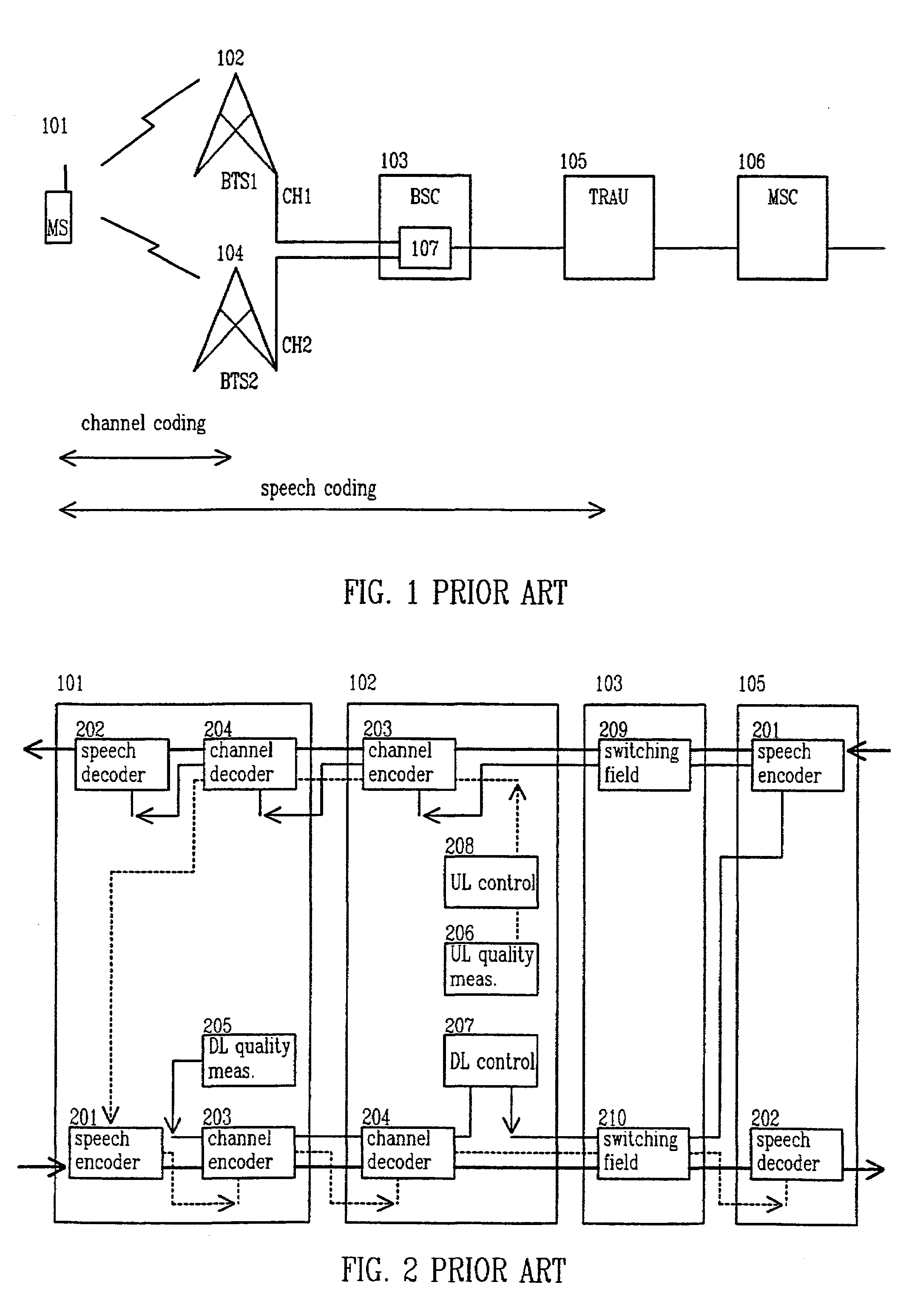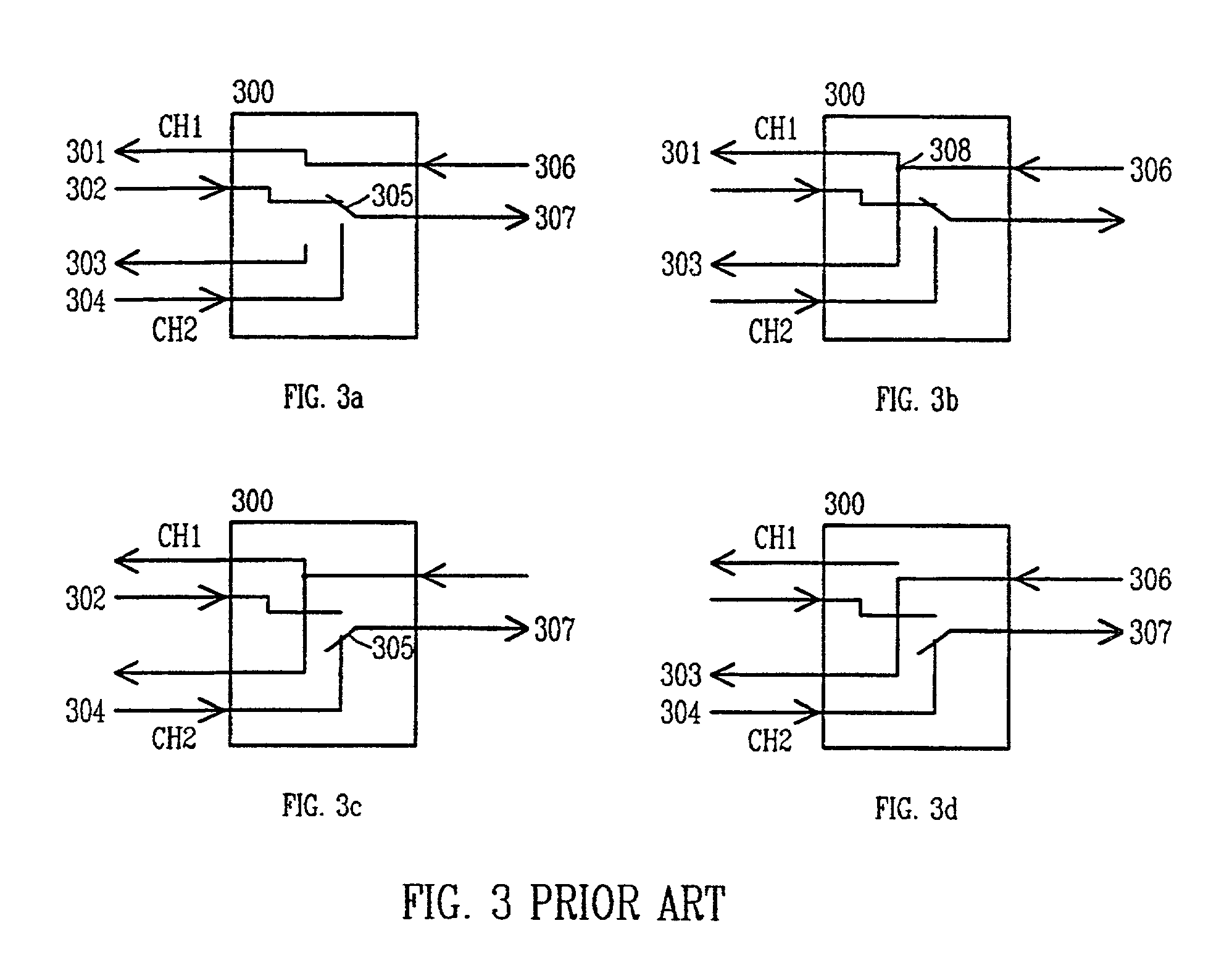Method for changing the route of a data transfer connection and for increasing the number of connections over a data transfer link
a data transfer and data technology, applied in data switching networks, instruments, frequency-division multiplexes, etc., can solve the problems of channel coding adding to the data that must be transferred, uncontrollable speech quality degradation, transmission capacity waste,
- Summary
- Abstract
- Description
- Claims
- Application Information
AI Technical Summary
Benefits of technology
Problems solved by technology
Method used
Image
Examples
Embodiment Construction
[0083]FIGS. 1 to 3 were already discussed above in connection with the description of the prior art.
[0084]FIG. 4 illustrates the limiting of the processing method selection according to a first advantageous embodiment of the invention. A one-way communications connection is used as an example in the figure. Information x to be transferred over a communications connection is processed in a processing block 410 using processing method y=c(x). Between the processing block 410 and restoration block 440 information is at first transferred at first data transfer rates, of which FIG. 4 shows by way of example a data transfer rate v1 represented by arrow 401 and a data transfer rate v1′ represented by arrow 402. A rate adaptation block 430 carries out data transfer rate adaptation and e.g. possible changes in the representation of processed information. In the restoration block 440 processed information y is processed using restoration method z=d(y)=d(c(x)). If the processing method c is lo...
PUM
 Login to View More
Login to View More Abstract
Description
Claims
Application Information
 Login to View More
Login to View More - R&D
- Intellectual Property
- Life Sciences
- Materials
- Tech Scout
- Unparalleled Data Quality
- Higher Quality Content
- 60% Fewer Hallucinations
Browse by: Latest US Patents, China's latest patents, Technical Efficacy Thesaurus, Application Domain, Technology Topic, Popular Technical Reports.
© 2025 PatSnap. All rights reserved.Legal|Privacy policy|Modern Slavery Act Transparency Statement|Sitemap|About US| Contact US: help@patsnap.com



